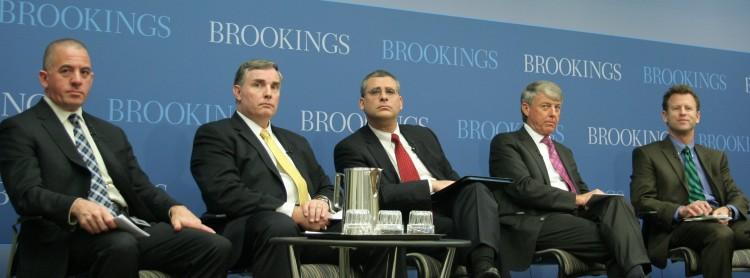WASHINGTON—As the politicians and the public begin discussions for yet another fiscal cliff crisis before the new deadline of March 1, they could consider—in addition to cutting entitlement—another form of discretionary spending.
The Department of Defense (DOD) budget was described as “bloated” by the man nominated to be its next secretary, former Sen. Chuck Hagel (R-Neb.). Locating the alleged waste, however, is a challenge.
“How can we cut without harming national security in this juncture in the nation’s history?” Michael O‘Hanlon asked rhetorically at a discussion, Warriors Against Waste, held at the Brookings Institution on Jan. 24. O’Hanlon is a senior fellow and director in the foreign policy program at Brookings, where he specializes in U.S. defense strategy.
In preparation for this forum, O‘Hanlon wrote a memorandum to President Barack Obama that he shared with the audience. The memorandum set forth two basic approaches to budget cuts—“modest savings” and “big cuts.” If the country goes the latter route and decides to make substantial cuts like those proposed by the Simpson-Bowles commission, it would probably be necessary to reduce the size of the force and make major changes in military compensation, according to O’Hanlon.
The active-duty Army could be downsized from 500,000 soldiers, as it is now, to 400,000 soldiers, for example. That number would still be sufficient to engage in a major mission similar to the one in Afghanistan, but it would be difficult to fight two wars concurrently, which has been the basic American military strategy for decades.
“Military compensation, now $25,000 greater per person than at the start of the Bush administration, might be gradually returned toward 2001 levels,” O'Hanlon wrote, adding that this reduction, however, runs a major risk for a nation that relies on an all-volunteer military.
O'Hanlon has little appetite for such “big cuts.” Although it would save around $300 billion, it holds risks that are not worth the benefits. However, there are efficiencies that can be gained that could achieve more modest savings of $100 billion–$200 billion over one decade, he said. The forum discussed several ways to save this money through various reforms without fundamentally changing the overall strategy.
Advice From a Budgetary Expert
Alice Rivlin was asked to frame the discussion of defense savings in a wider budgetary context, and Rivlin is well qualified to discuss budgetary concerns. She was vice chair of the Federal Reserve Board, director of the White House Office of Management and Budget in the first Clinton administration, and the founding director of the Congressional Budget Office (CBO). She served as co-chair of the Domenici–Rivlin Debt Reduction Task Force, and in February 2010, Rivlin was named by President Obama to the National Commission on Fiscal Responsibility and Reform.






